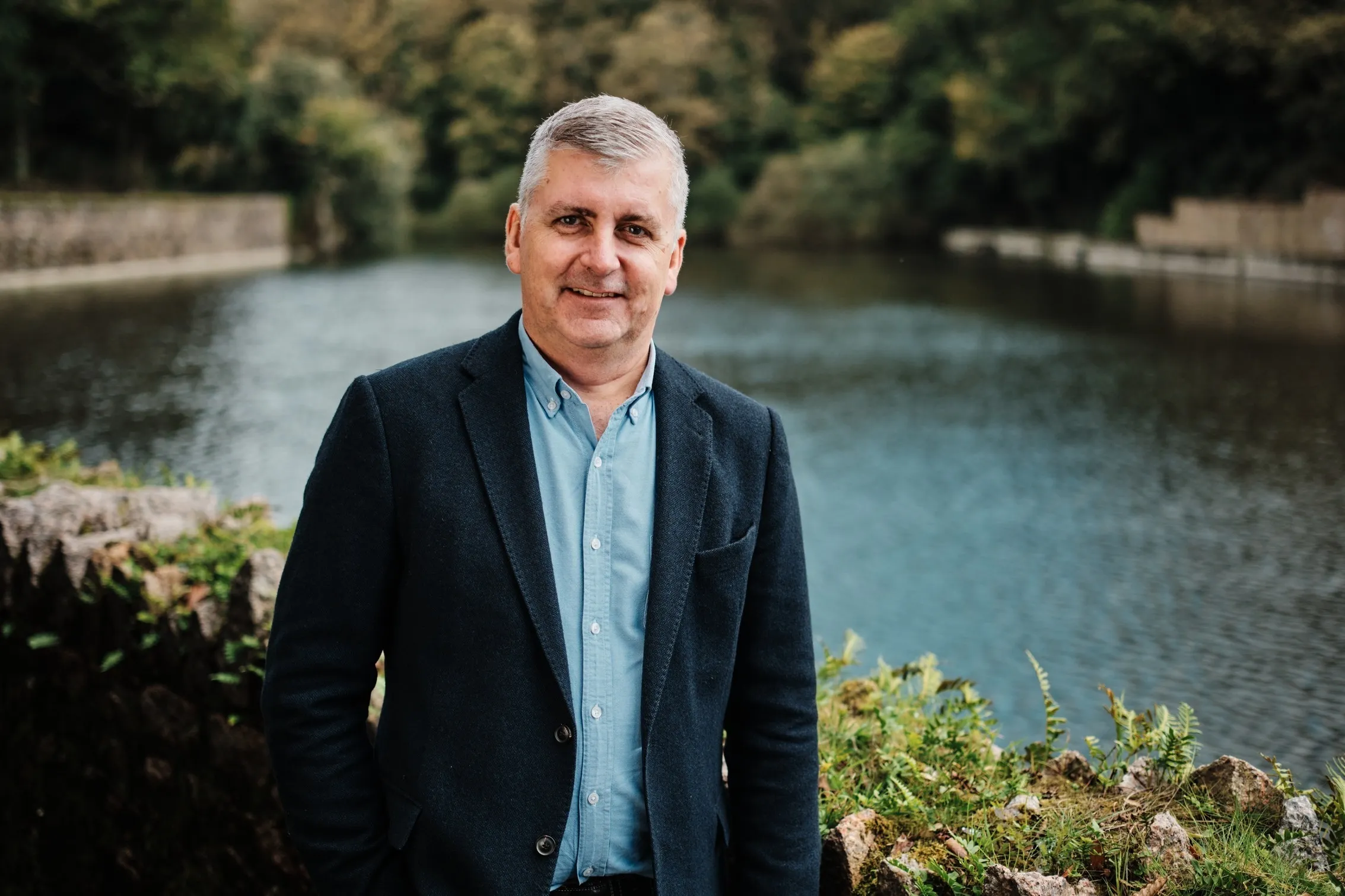By Jersey Water,Julien Morel
Copyright jerseyeveningpost

THE cost of climate change will hit Islanders pockets next year when water bills go up to fund plans to secure supplies during expected more frequent periods of drought.
The average household will pay an extra £59 a year in 2026, taking their annual bill to around £443, to help fund a £48m investment programme by Jersey Water over the next five years.
Above-average increases to water charges are likely to continue from 2027.
Jersey Water says that the rises are necessary to fund projects to ensure that the Island always has enough water to meet its needs, and the water we drink is high quality.
The utility points to its latest research which forecasts that, within the next ten years, Jersey could face a potential water deficit of 8.6m litres a day during severe drought, which is almost half the Island’s average daily supply.
It adds that climate change, limited water storage and forecast changes in population are all contributing factors that, without action now, could lead to Islanders experiencing water restrictions and emergency measures during dry periods.
Jersey Water chief executive Helier Smith said: “One thing that the future is showing is that climate change is having an impact on our weather patterns and on the water we have available in the Island, so collectively we need to plan and respond to that change in climate by becoming more water efficient, capturing more water in our reservoirs and having resilience during periods of drought.
“That’s a journey that Jersey Water needs to go on, but we also need to work with our customers and the wider community to safeguard the precious resource that is water in our Island.”
Jersey currently has just 120 days’ worth of water storage capacity, making it extremely vulnerable to drought compared to many other places. The Island’s daily demand is on average between 18m and 23m litres per day.
What is planned in the 2030 strategy?
Increasing the capacity of the existing desalination plant by 50%
The desalination plant at La Rosière – built in an abandoned quarry – began operation in 1970 and was converted from a seawater distillation plant to a reverse osmosis plant in 1999. The plan is to spend £26m in the next five years to increase the number of reverse-osmosis units from two to three.
At full capacity, the plant currently produces 10.8m litres of fresh water per day, meaning the upgrade will take that up to 16.2m litres. At the moment, it consumes 45,000 kW of electrical power per day but increasing capacity is still the most cost-effective means of increasing supply.
Mr Smith said: “Pound for pound, desalination is far cheaper than any other water resource intervention. The beauty of desalination is also certainty: when you run it, you know how much you’re going to produce; unlike a reservoir, which is dependent on rain. As an insurance policy for the Island, desalination is the best solution.
“The current plans are that it will always be an emergency resource in times of drought or lower rainfall but we do run it pretty much every year for training and continuity purposes.
“The efficiency of the plant is significantly greater these days. The last time we updated the plant in 2012, we doubled the capacity but maintained the same level of cost of operation. This upgrade will follow that same level of efficiency.”
Reducing leaks and improving the network
Jersey Water plans to detect and fix leaks faster with new monitoring technology, replace 6 km of its 600 km mains network, and expand smart meter technology gradually across the Island so customers, in the future, will be able to track their water use, spot leaks early and manage bills.
Mr Smith said: “We’re going to be focusing on keeping our leakage levels as low as we possibly can. Our leakage is already among the lowest in the British Isles, if not the lowest, but we can do better.
“With every three metres of piping there is a joint, so there are always going to be issues. It is how you manage that risk and how you respond to it when it happens: it’s being quick to identify and respond to bursts and leakage and making sure you’ve got an investment programme to replace the ageing pipe work before it goes wrong.”
Mr Smith said that the utility would continue to advise its customers on how to use less water.
He said: “We’re probably the only large business that I know who is actively asking our customers not to use our product, so while encouraging the efficient use of water might be against our commercial interests, it is in the long-term interests of the Island, so it is the right thing to do.”
Dealing with PFAS
As well as these infrastructure improvements, Jersey Water is also preparing to adapt and future-proof its operations to respond to new water quality regulations, with particular focus on PFAS – a ubiquitous and pervasive manmade family of chemicals which has been linked to causing, among other things, cancer, thyroid disease and weakened immune responses.
PFAS is present at trace levels in mains water and has been found in high concentrations in water courses flowing from the Airport, where firefighting foam containing PFAS was sprayed over many years.
Jersey Water has been forced to stop abstracting water from boreholes in these areas.
Before expected new government regulations, the utility is developing a ‘PFAS treatment plan’, which will likely require major changes to existing water treatment processes and potentially an entirely new treatment plant.
Nearly £2m has been allocated by Jersey Water over the next two years for interim treatment and pilot trials for long-term treatment solutions.
The company says that the costs for treatment are expected to be significant, and it will work with the Government to formalise funding arrangements through the ‘Jersey Capital Investment Fund’, which was recently launched as part of its ‘Investing in Jersey’ initiative.
The recently published strategy includes extending the mains water system and investing in “long-term water security, including PFAS treatment and supply resilience”.
Mr Smith said: “The end game is to be fully compliant with the limits set by the water quality regulator, which is the Government. We’ve been advocating for limits for PFAS since 2019, when the Technical Officer Group, of which we were part, was established.
“We’re delighted that the government are pursuing this project with the PFAS Scientific Advisory Panel, and that the panel is making recommendations for what those limits should be, and we look forward to complying with them.
“Around PFAS, the government, in my view, has been doing an excellent job in managing the situation and responding with the establishment of the panel, who’ve brought in a huge amount of expertise to look at the situation.”
Mr Smith added: “We must not forget that we’ve got exceptionally good water quality in Jersey. We meet all the water standards that we’re required to meet across the board. We’ve been fully compliant with all nitrate limits for over a decade.
“I know there’s a derogation [in law] that we’re allowed to use but we haven’t had need for it for a decade. It is the same for pesticides: there hasn’t been a single exceedance of pesticide limits over that same period. So, in all respects, the water quality that Islanders experience is exceptionally good, and we should be really proud of it.”
Impact on bills
To support these measures, customers’ water bills will be increasing from 1 January 2026. Average households can expect to pay approximately £60, or 16p per day, more next year for their water, with further above-average increases anticipated from 2027.
The cost per litre next year will rise to 0.42p per litre, or 16.31p per day. This means the average household will pay an extra £59.48 in 2026, or £443.18 in total.
Mr Smith said: “Everything we do is paid for through our charges for water so inevitably, when we have to make investment, that investment needs to be met through our water charges.
“We do have a borrowing facility so that gets used to fund investment in the short term and over the long term, that gets repaid through our charging structure.
“While Jersey Water is clear that these investments are crucial to safeguard the Island’s water supplies, we equally recognise the financial pressures that many customers are continuing to face, and we are committed to providing support to those who need it.”
Around 2,800 properties are not connected to mains water and Mr Smith said that Jersey Water’s five-year plan contained a “modest” amount – £1.25m – to connect homes. However, he added that the government’s Jersey Capital Investment Fund would also fund an extension of the network
He said: “To connect every remaining property would require laying over 90 km of mains in the road, which is significant. And the cost of those 90 km is over £40m, which represents a significant investment.
“We have to look to how that would be funded. The revenue generated from that wouldn’t be sufficient to justify the investment in its own right, so we have to look to working with other parties, either the homeowners themselves, the Government through the Investing in Jersey fund, or some other mechanism.
“We’re delighted that the government has included mains extensions within that fund, and we really look forward to starting that conversation with them as to what it looks like in detail.”



